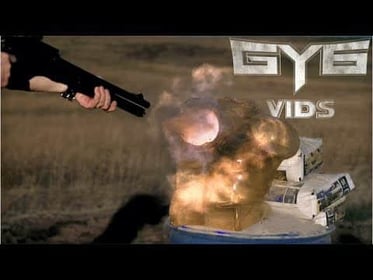Double Action revolver grip and trigger engagement.
Trigger control is one of the fundamental elements of shooting. Combined with grip, stance, sight alignment and breathing, you must master trigger control to shoot accurately, quickly, and with confidence. If you carry a double-action revolver, DA/SA semi-auto, or DAO semi-auto, you will have a trigger which is long and heavy compared to the single-action pull on a 1911 or Hi-Power. With the traditional double action pistol, the first pull is the long DA variety, followed by the shorter, lighter SA pull when the hammer is cocked. The key to good DA trigger control is minimal disturbance of the sight alignment from beginning to end. Even when “point shooting” at very close range, it is important to keep the gun aligned toward the target. This takes some practice, but it is not difficult if you go about training the right way.
What is good DA trigger control? To attempt to describe it; it is not a “jerk,” “squeeze,” “press,” or a “yank.” It is more of a “roll” or a “stroke.” Let’s break that down. Good DA trigger action is controlled from start to finish. It is neither too fast nor too slow. To achieve this, the trigger finger must move independently of all other muscles of the firing hand. If you are increasing the pressure of your grip while actuating the trigger, you are moving the gun around. The pressure of the thumb and all other fingers should remain constant. The wrist should be firmly locked and stationary.
[ad location=”Posts – Middle Post”]
Further, the ideal DA trigger action should be at constant speed from beginning to end. You start pulling and pull on through until the shot breaks. Some trainers recommend “stacking” or pulling until you feel an increase in resistance, then breaking the shot. I disagree with this approach. Many excellent DA triggers present constant resistance throughout their entire travel, so you cannot “stack” them with any certainty. At worst, this technique could lead to prematurely firing a shot. Although this is no big deal on the range, it could be disastrous in a live-fire situation. As a point of information, I refer to a Glock trigger as a “two-stage” trigger. This has a light take-up stage, followed by increased resistance. A shorter, heavier pull is then required to fire the shot. This is different from a double-action trigger, which offers fairly uniform resistance.

Double-action trigger pull drill. Make sure your gun is not loaded!
Here is how to develop and maintain that double-action trigger control. This is a dry-fire technique which you can practice at home. First, make sure that your firearm is completely unloaded. Put the ammunition aside. Then, grip the firearm in the usual manner. Take a firm, but not overly tight grip. If your knuckles are white, you are gripping too hard. Hold the gun level at about waist height. Place an empty cartridge case on the top strap of a revolver or on the top of the slide of a semi-auto. Now, pull the trigger through in one motion without causing the cartridge case to fall off the gun. After you can reliably do this, try two shots in succession, then three, etc. Practicing in this manner will help you remove any trace of jerkiness from your trigger pull. Doing this exercise for 15 minutes twice a day will shrink the size of your groups on the range and eventually increase your speed at double action firing. Remember, go for smoothness first. Speed will come.

A good double-action trigger. Narrow, polished, and curved.
You will find this technique much easier to master if your firearm fits you properly. For a good double-action pull, your finger should engage the trigger at the first joint, not on the tip. The trigger itself should be smooth, narrow, and have a fair amount of curvature to it. If the trigger reach is not right, sometimes installing an after-market grip will correct the situation. Some manufacturers offer a number of different triggers so you can change the reach by swapping out parts. If the trigger reach is too long, you may find that a different firearm is more suited to the size of your hand.
Whatever your chosen firearm, practice frequently to improve and maintain your skill. Not all practice needs to take place at the range. Practice pays off in increased confidence. Stay safe.




![Glock Gen 5 Review [Watch]](https://imagedelivery.net/sbm_lYeJbALkepJgtmRD5w/concealednation.org/2017/08/glock-gen-5-review.jpg/w=728,h=381)


![[LIGHT REVIEW] ACEBEAM Defender P15 Is Going To Light Up Your World](https://imagedelivery.net/sbm_lYeJbALkepJgtmRD5w/concealednation.org/2021/11/Acebeam-defender-P15-light-review_10.jpg/w=728,h=381)
![[VIDEO] Man Successfully Defends Home With AR-15 After His Door Is Violently Kicked In](https://imagedelivery.net/sbm_lYeJbALkepJgtmRD5w/concealednation.org/2019/09/ScreenHunter_2597-Sep.-20-19.56.jpg/w=728,h=381)




